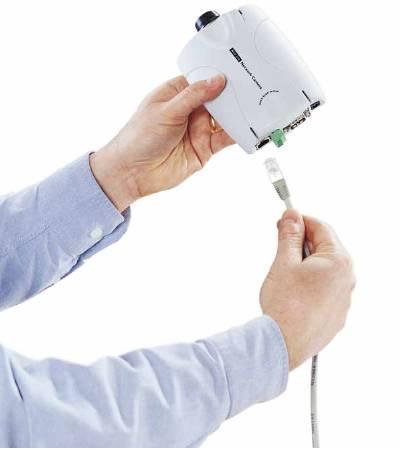 Network
Video Solution
Network
Video Solution
Building a new digital
network

 as
a digital network video system is able to transmit video without
the need for a dedicated physical infrastructure connecting the
camera to the monitor. It uses standard IP networks, such as LAN
or Internet, for transporting nformation, rather than dedicated
point-to-point cabling, such as that used in analog video systems.
as
a digital network video system is able to transmit video without
the need for a dedicated physical infrastructure connecting the
camera to the monitor. It uses standard IP networks, such as LAN
or Internet, for transporting nformation, rather than dedicated
point-to-point cabling, such as that used in analog video systems.
Existing
Infrastructure
The majority of businesses, schools and industries now have a
high-speed, IP-based network connected to the Internet. The same
is true of an increasing number of stores and homes. Adding  video
system simply utilizes and extends the same infrastructure to
include video functionality.
video
system simply utilizes and extends the same infrastructure to
include video functionality.
Easy
Set-up
Under these circumstances setting up  video system is both simple and cost-effective. The only action
required is to set the IP addresses of the network cameras íV a
process that should not take more than a few minutes to perform.
Once the basic system is up and running, it can be fine-tuned
in a number of ways: by adding other functions such as motion
detection, alarm handling, time stamping, local programmability,
digital inputs and relay utputs, and Pan-Tilt-Zoom control.
video system is both simple and cost-effective. The only action
required is to set the IP addresses of the network cameras íV a
process that should not take more than a few minutes to perform.
Once the basic system is up and running, it can be fine-tuned
in a number of ways: by adding other functions such as motion
detection, alarm handling, time stamping, local programmability,
digital inputs and relay utputs, and Pan-Tilt-Zoom control.
System
Expansion
Should the need arise, the system can be expanded by adding more
network cameras. This is just as easily done regardless of whether
the new cameras are to be placed at the same site, or at a new
location communicating over the Internet.
Advantages,
Present...
By establishing a digital network, you can achieve the full functionality
of an analog system, whilst simultaneously acquiring the numerous,
additional functionalities and advantages offered by digital technology,
such as flexibility of access to information, ease in distribution
of images, capacity for integration, scalability, and reduced
costs.
...
and Future
For new users of video technology, this is a good opportunity
to invest in a digital system that will last well into the future.
Network video has the capacity to provide a higher level of integration
with other functions and services, making it a continually developing
system. And the use of open standard protocols and networks for
communication enables easy system integration with equipment from
a wide range of manufacturers.


